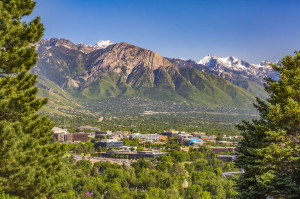A brief history of special districts
 Special districts are independent, special-purpose branches of government that exist separately from counties and municipalities. They serve very specific functions and have administrative and fiscal independence.
Special districts are independent, special-purpose branches of government that exist separately from counties and municipalities. They serve very specific functions and have administrative and fiscal independence.
You might not realize it, but special districts have been around for hundreds of years. In fact, the first special district in the U.S. was formed in 1790. More than a century later, in 1898, the state of Utah established its first special district for library services. Several years after that, in 1913, state legislators drafted and ratified the Utah Code. The Utah Code carries specific authorization for the formation of districts.
Nowadays, there are more than 400 local and special districts operating in Utah. Approximately one-third of those districts are designated as “special service districts,” and the other two-thirds are designated as “local districts.”
What’s the difference between a special service district and a local district?
A local district is an independent government entity created by cities or counties to provide a specific service, including airport operations, sewage system operations, law enforcement services, health care and mosquito abatement.
A special service district is a hybrid entity. Special service districts are independent except for when it comes to the levy of taxes or assessments, the insurance of debt, or the holding of an election. These tasks must be approved by the governmental entity that created the special service district in the first place. Therefore, special service districts are still under the control of their creating entities.
Some of the most common services that special service districts provide include water, animal shelter and control, fire protection, garbage collection and disposal, and drainage.
How are districts created?
Local districts and special service districts can only be created by cities and counties. This can occur through a resolution or by a petition from a group of citizens.
If you’re interested in learning more about local or special service districts, visit our website. There, you’ll find statutes and resources, legislative information and more.






